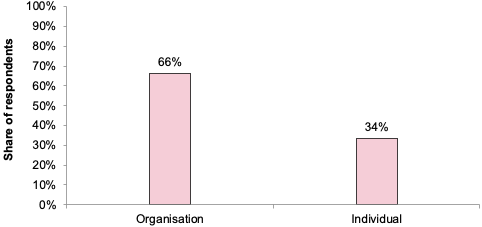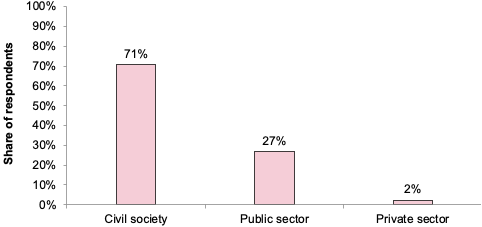A Human Rights Bill for Scotland: consultation analysis
The independent analysis by Alma Economics of responses to the consultation on A Human Rights Bill for Scotland, commissioned by Scottish Government.
2. Methodology
The consultation opened on 15 June 2023 and closed on 5 October 2023. Response collection was conducted through the online Citizen Space portal. Respondents could submit a response to the consultation via the following means: (i) via the Citizen Space online platform, (ii) email (including PDF attachments, Easy Read question responses, and child-friendly version responses), (iii) post (hard copy responses would be scanned as PDFs), and (iv) by participating in a public consultation event.
The consultation consisted of 52 questions, divided into two categories: 10 closed questions, which prompted multiple choice answers (e.g. yes/no or agree/disagree), and 42 open-text questions, inviting free text responses.
These questions were asked across six parts of the consultation document:
- Incorporating the Treaty Rights;
- Recognising the Right to a Healthy Environment;
- Incorporating Further Rights and Embedding Equality;
- The Duties;
- Ensuring Access to Justice for Rights-Holders;
- Implementing the New Scottish Human Rights Act.
A total of 397 responses were received, 277 directly via Citizen Space and 120 separately via email (in some cases including PDF attachments).
Answers were combined into a final Excel file used for subsequent coding. Only email or PDF responses that explicitly addressed consultation questions were added to respective Excel sheets per question. A total of 315 unique submissions answering the consultation questions were reviewed accordingly. A separate analysis sheet was added for email responses that did not directly answer the consultation’s questions, as well as for general comments about the consultation contained in email responses and were coded separately as “unstructured responses”. Reports from public consultation events were also coded separately.
All responses were reviewed in full. Before turning to the qualitative analysis of consultation responses, we first analysed the responses to the closed questions, calculating the total counts for each available option within each closed question, as well as the respective percentages in relation to the total number of responses received for each corresponding closed question. We also produced charts and tables to better present the distribution of responses to each closed question. All charts have Alt Text to enable full accessibility.
Open-text questions were categorised using a thematic analysis whereby responses were assigned key themes and coded accordingly. This qualitative research method (Braun and Clarke 2006) involved manually reviewing each response to identify common themes; connecting these themes to specific questions of the consultation to develop a narrative for each theme; cross-referencing the emerging themes to ensure the accuracy of the analysis; identifying responses that did not align with the general emerging themes but provided additional insights. These insights were included in the analysis, even though they were not raised by many respondents.
This report lists the number of responses to each question at the beginning of each section. The main body of this report follows the consultation’s question order, and themes for each open-text question are presented in order of frequency (descending by the number of respondents mentioning the respective theme). The three most frequently mentioned themes are presented in full, followed by a summary of other emerging themes.
While the analysis of open-text questions is qualitative and cannot be quantified, a general rule of thumb was applied to indicate the frequency of emerging themes using specific phrases, which could provide an estimate of the number of respondents discussing each respective theme. In particular:
- “a small number” indicated up to 5 respondents.
- “a few” indicated around 6-9 respondents.
- “a small minority” indicated more than 9 respondents but less than 10%.
- “a significant minority” indicated between approximately 10-24% of respondents.
- “a large minority” indicated more than a quarter of respondents but less than half.
- “a majority” indicated more than 50% of those who commented on the question.
Respondents were self-selecting and may not represent wider public opinion across Scotland. Where appropriate, individual quotes have been used to illustrate the narrative around specific themes, with quotes selected only from respondents who provided permission for their views to be published, and any potential identifiers (such as the name of a specific organisation) removed in cases where confidentiality restrictions applied. Typos in selected quotes have been corrected to ensure uninterrupted readability of shared views.
Respondent characteristics
A total of 397 respondents participated in this consultation, with 264 (66%) representing organisations and 133 (34%) being individual respondents.

Among the 264 responses from organisations, 71% were classified as civil society organisations, 27% were public sector organisations, and 2% were private sector organisations.

Contact
Email: humanrightsoffice@gov.scot
There is a problem
Thanks for your feedback